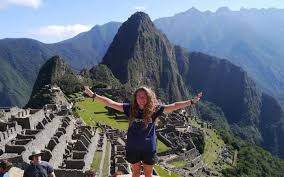Sustainable volunteering during the course of your gap year in Latin America can result in lasting positive change for both you and the communities you help. However, to ensure your efforts are impactful and respectful, you must to adhere to the best practices. Here are additional tips to improve your volunteer experience, while also promoting sustainability.
Commit to Long-Term Projects
When choosing a volunteer project Prioritize projects that are an integral part of a longer-term plan to develop community. Some short-term volunteer opportunities may provide immediate gratification but often fail to address the larger systemic issues. Look for initiatives that provide to continue support and allow you to contribute meaningfully as you work alongside the local community over long periods of time.
Promote Environmental Sustainability
Integrating sustainability and environmental considerations into your volunteer efforts is crucial particularly in ecologically rich regions of Latin America. Select projects that focus on reforestation, conservation, and sustainable farming. Also, adopt eco-friendly practices throughout your stay, like taking care to reduce waste or water usage, and taking public transportation. Your dedication to sustainable living can encourage others to adopt similar practices.
Collaborate with Local Experts
While you may bring valuable skills and knowledge to your volunteer activities It is essential to work in a way with the local authorities who understand the specific needs of your community. This will ensure that your efforts align with the local requirements and you gain knowledge from people with direct knowledge. Building partnerships with local authorities can build mutual respect and create more effective solutions.
Engage in Capacity Building
Concentrate on building capacity by sharing your expertise with your community. Instead of doing the work for them, show them how to do these tasks independently. This method encourages self-sufficiency and lets the community keep benefiting from your experience long after your departure. Whether through workshops, training sessions, or mentoring the local community, it is a key component of sustainable volunteerism.
Leave a Positive Legacy
Gap Year close to its end think about ways to leave a lasting legacy within the community. This might involve creating resource materials, documenting the best practices, or even training local volunteers to carry on the work you’ve started. If you focus on leaving a positive impact, you can ensure that your efforts continue to benefit your community even after you’ve returned home.
By following these guidelines, you can maximize the impact of your volunteering experience while aiding in the sustainable development of communities in Latin America. This gap-year experience will not only enhance your life, but it will also create meaningful change for the people you help.



